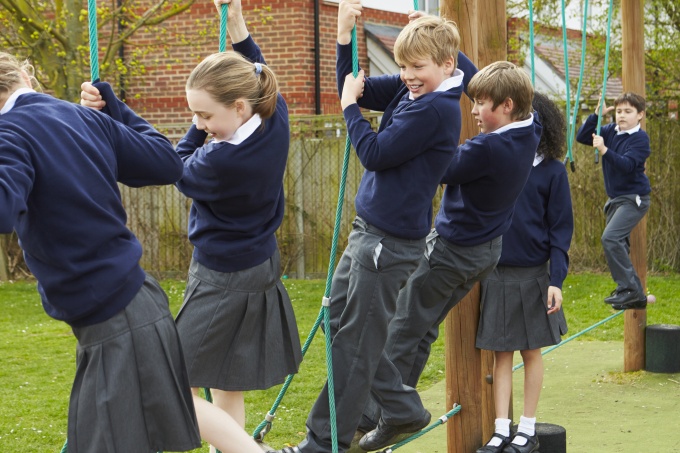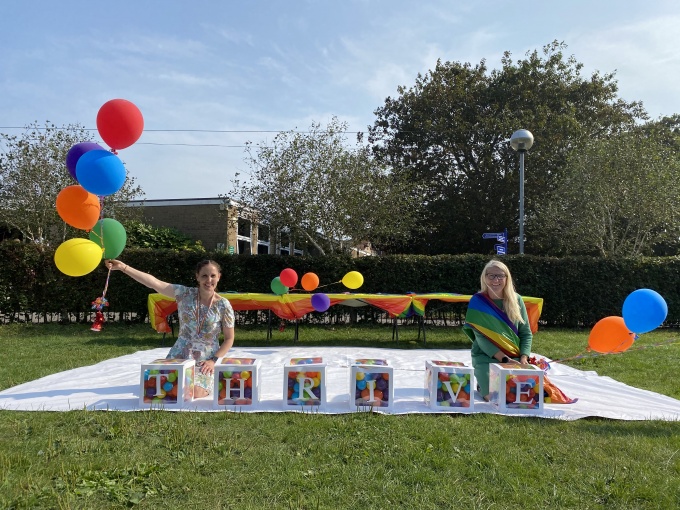Samantha Strange is the Personalised Learning Centre Manager at Northfields School and Sports College, a large secondary school in Stockton-on-Tees. Keen to move away from isolation booths and exclusions, the school needed a solution to improve behaviour and help young people engage with learning.
Read on to discover the ‘revolutionary’ training that changed Samantha personally and professionally, how building positive relationships has led to a drop in truancy, and the neuroscience that is breaking down barriers to learning.
Helping young people access education
I’m Samantha Strange, the Personalised Learning Centre Manager at Northfields School and Sports College, in Stockton-on-Tees. It’s a large secondary school with almost 1,500 students, including a specialist provision for visually impaired pupils. My role is about helping children to access their education – identifying any barriers that might be present and working to overcome them. I see students who aren’t engaging with education for a number of reasons but the most common one is poor behaviour.
Isolation booths and exclusions weren’t working
As a school, we were previously using things like isolation booths and exclusions but we knew this approach wasn’t working. We were finding that every student we talked to in order to understand their behaviour had a story. There was always a reason why the behaviour happened and we wanted to look at this in more detail, to really understand it and to try and change things.
Our headteacher wanted to take a different approach, moving away from sanctions towards something more restorative where we could help pupils rebuild any ruptures that may have occurred in their relationships with teaching staff so that they felt more comfortable in school and more able to access lessons. In response to this, I completed my Thrive Adolescence Licensed Practitioner training in 2021.
Thrive has really helped us to pull everything together – to listen to our students and attune to their needs in a structured way that is underpinned by science and research. It also makes our pastoral work measurable, which has allowed us to feel confident that what we are doing is effective and it has been really useful for reporting to Ofsted.
.png)
A dramatic drop in truancy
The biggest difference we have observed so far in our journey with Thrive is that truancy levels have dropped dramatically. We have seen children who used to either leave the site or spend most of the day hiding in the toilets seeking out Thrive practitioners to have a discussion about why they are having problems. This gives us a point that we can build bridges from. We can start reparative work with these students whereas before we were seeing a lot of fight or flight reactions from them.
‘Revolutionary’ training
Anyone who is about to start a course with Thrive needs to understand that it will completely change them. For me, learning about the Thrive Approach has been revolutionary. It’s changed my professional practice and my personal life for the better.
For example, I recently took my daughter swimming. She’s gone up to the next stage so it feels a bit different for her and she had a bit of a wobble where she got very upset in the lesson.
I was on the viewing deck and I could see what was happening and I was aware that my mum would have said ‘just let her get on with it, she’s alright’ but I looked at it through my Thrive eyes and I knew she wasn’t feeling safe. I went down and we had a conversation and she rejoined the lesson and she was fine.
Before Thrive I would never have done that, I would have taken the same approach as my mum. So be warned, Thrive will change your practice and your life! It gives you the theory and the scientific evidence as well as the practical tools to approach situations differently to get a different result.
.png)
The science behind behaviour
I particularly enjoyed learning about neuroscience. The course went into a lot of detail and I found it enlightening to learn about why we react in certain ways. It helped me to understand my own responses which I was able to feed into my professional practice because I was better able to empathise with students.
I would think ‘well, if I feel like this in a situation as an adult, how do they feel as young people?’ I’ve also found that explaining the neuroscience in basic terms to our students has really helped them to gain more of an understanding of their own emotions. They appreciate having this understanding and find it empowering.
One Year 10 student we work with is often dysregulated and we’ve talked about the science of why she responds in this way. When we talk to her you can see the physical signs of her dysregulation start to abate. Her breathing becomes more regular and she is able to calm down and start to reflect on the situation cognitively. She realises now that she’s not different to everyone else and that her behaviour is what would be expected in that situation.
We had another student who had a lot of personal problems and had become very withdrawn. Previously, it felt like we couldn’t do anything to help her because she found it so hard to open up, but what I realised as a result of my Thrive training was that we were trying to reach her at a cognitive level but that, at that particular moment, she wasn’t able to engage in this way. We’ve now done a lot of Thrive activities with her to help her to feel safe and to work on things like making eye contact. She’s gone from not being able to look at an adult to being able to sit and have a conversation about what the issue is.
.png)
She was previously attending hardly any lessons but we’re now in a position where she is going to all her lessons except one – that is a huge leap forward. It’s not always easy and sometimes it’s important to celebrate the small steps. For example, we had a student who didn’t access nearly all of her lessons recently. But she’s in school today whereas two years ago, she hadn’t attended for 18 months.
Taking a relational approach
Another aspect of Thrive training that made a difference for me was the support I got from my trainer and from the other delegates.
Shortly after I started the course, I got Covid and I was very poorly for a while. My perception was that, as a result, I had fallen behind and I had a complete panic that I wasn’t going to be able to catch up. I sought help from my trainer and she basically said to me ‘everything is OK’ and we had a conversation about how I was feeling and what I could do. I also spoke to the other delegates on my course about how they were finding things.
As a result, I felt much better and able to pick myself up and carry on again. This was something else that has convinced me of the importance of a relational approach - it showed me how I need to be when I talk to students.
Personal and professional benefits
Thrive training exceeded my expectations and it has brought me huge benefits professionally and personally. It’s been an amazing journey that has completely transformed me. I’m much more self-aware and I now consciously practise self-care.
As a result, I know that I’m a better practitioner, a better mother, a better wife and a better friend. I love my job and I work with a lot of lovely, like-minded people who support what we are doing. It hasn’t been easy getting everyone on board but people can see it’s making a difference and, as a result, they want to find out more.
I would advise anyone thinking about starting Thrive training to go for it, for your own mental health and for professional satisfaction.
.png)
'From truancy to academic attainment' podcast
Hear Samantha in conversation with Thrive trainer Sharon Gray, as they discuss Thrive Licensed Practitioner training and the benefits it brings. Click here to listen to the podcast.
Over to you
Used in conjunction with Thrive training, Thrive-Online is the award-winning profiling and assessment tool that has helped Samantha and her colleagues to reduce truancy and improve attainment. It’s supported over 50,000 other educators to improve wellbeing, attendance, behaviour, and attainment too. Are you ready to join them? Click here to schedule your free Thrive-Online demo.
Pass it on
Small actions can lead to a big ripple effect. If you enjoyed this post or found it helpful, please consider supporting us in our mission to help every child and young person feel safe, supported and ready to learn by sharing it using the social media buttons below.
Want to join a like-minded community of senior leaders and classroom staff benefitting from insights and strategies to improve attendance, behaviour and attainment? Add your email address below. (It’s easy to unsubscribe).

_680.jpg)

(7)_680.jpg)
_680.jpg)
